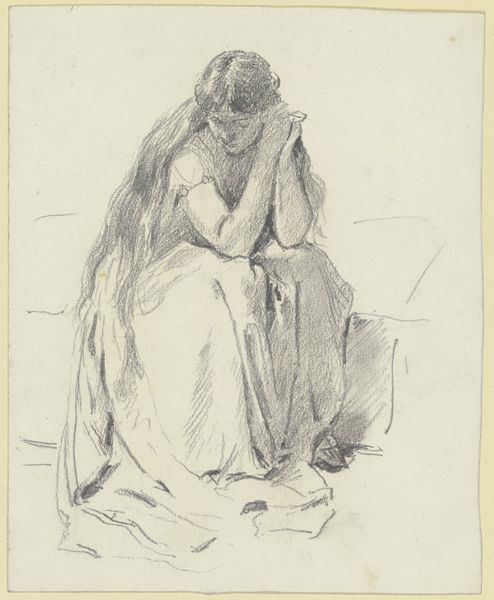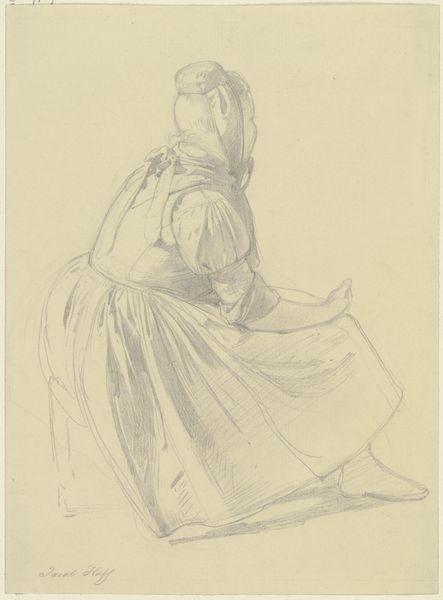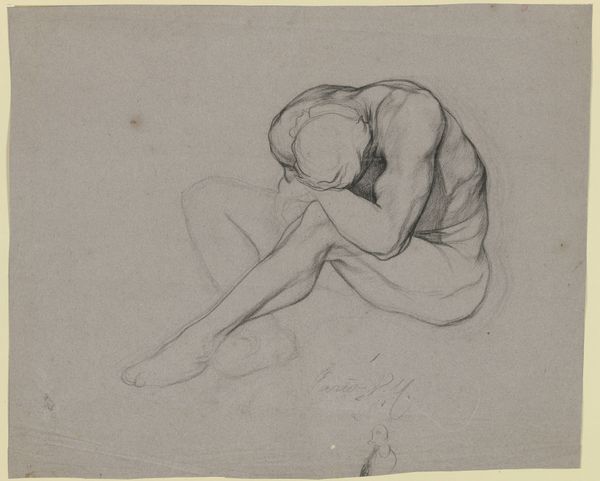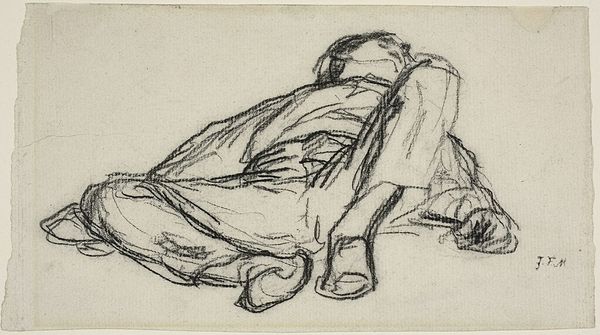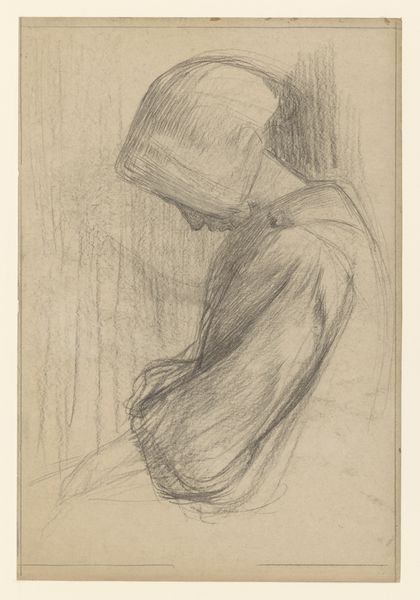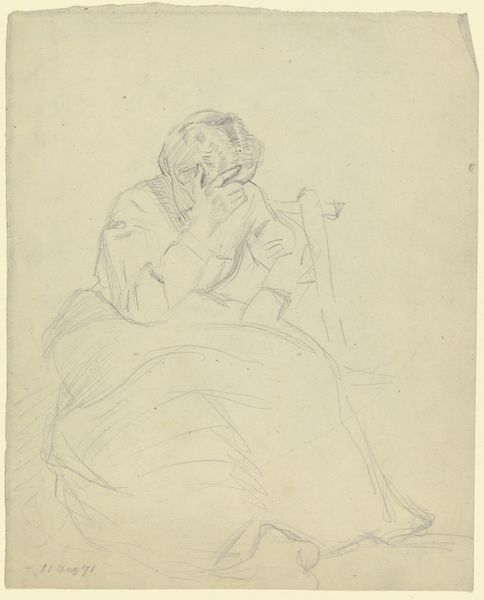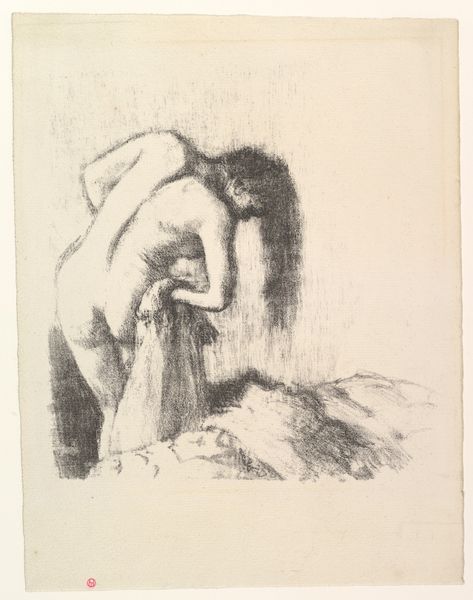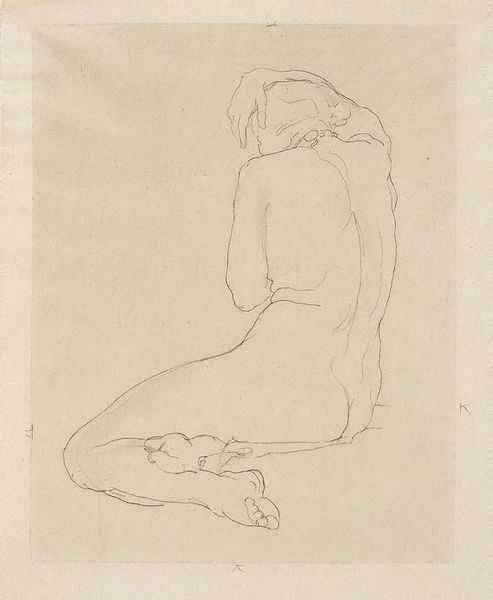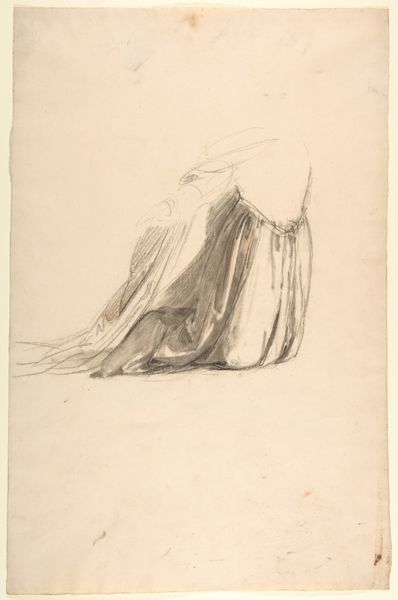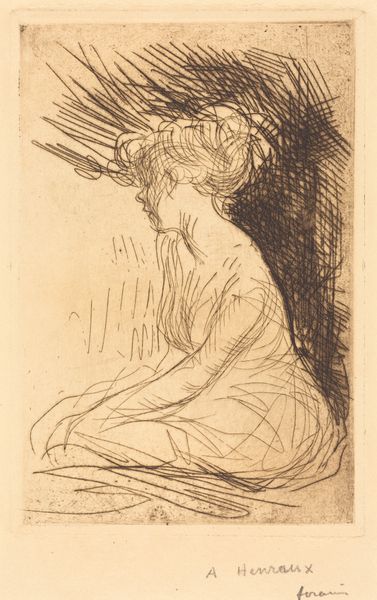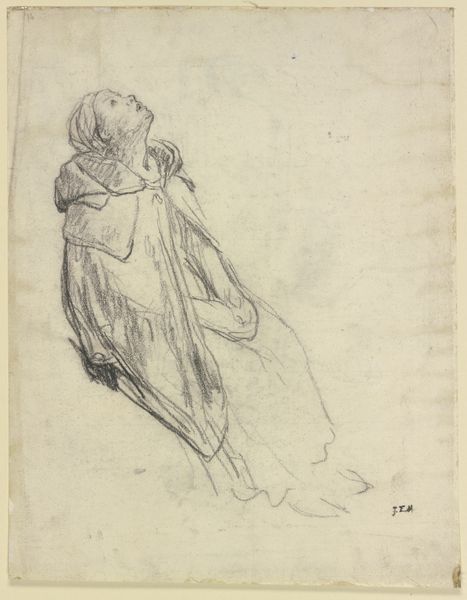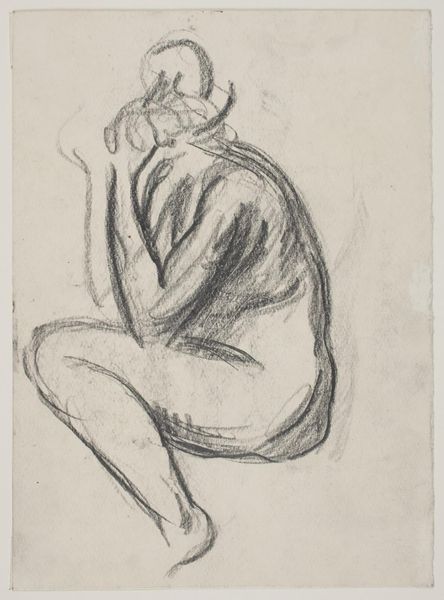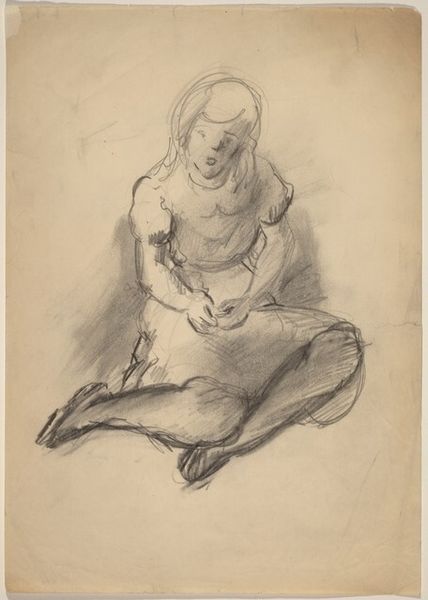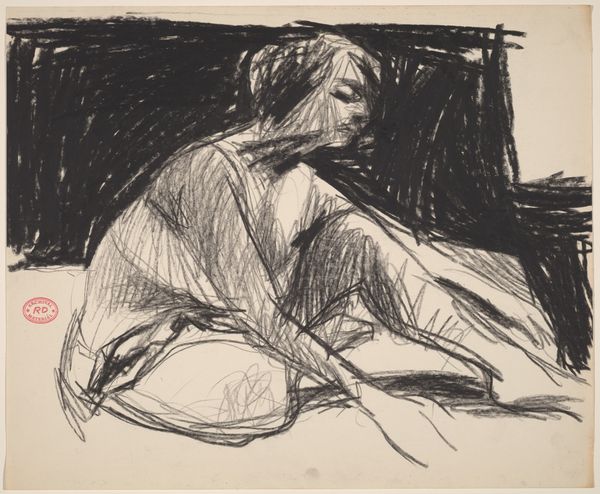
Am Boden kauernde Frau, die Hand vor das Gesicht geschlagen
0:00
0:00
drawing, paper, ink, indian-ink
#
portrait
#
17_20th-century
#
drawing
#
figuration
#
paper
#
ink
#
german
#
sketch
#
indian-ink
Copyright: Public Domain
Editor: Here we have "Am Boden kauernde Frau, die Hand vor das Gesicht geschlagen," or "Woman Crouching on the Ground, Hand Covering her Face." It is a drawing made with ink on paper, created by Agnes Langenbeck-Zachariae. It has a very immediate, raw quality that I find really powerful. What do you see in the way she’s captured this figure? Curator: The emphasis, structurally, is less on representational accuracy, and more on the emotional resonance achieved through stark lines and compositional choices. Note the strategic use of negative space around the figure; it isolates and intensifies the feeling of despair or introspection. Editor: So, the formal elements contribute directly to the emotional impact? Curator: Precisely. The heavy, almost aggressive strokes of ink don't merely depict form; they evoke a sense of weight and burden. The gesture of the hand obscuring the face becomes a potent visual signifier of grief or shame. Langenbeck-Zachariae employs this semiotic language effectively, allowing the formal qualities of the medium to convey emotional depth. What do you make of the ground on which she sits? Editor: I see, there’s almost no background to speak of, just those marks. That directs our attention entirely to the figure. Curator: Absolutely. It's about reducing the elements to their most essential forms. How does that affect the artwork’s readability? Editor: It really amplifies the woman's pose, making her the central focus, charged with the feelings the artist wanted to communicate. It becomes less about who she is, and more about the feeling itself. I guess that's the sketch's power here. Curator: Indeed. We’ve observed how the interplay of line, form, and negative space converge to create a powerful expressive image. It’s fascinating how, through these intrinsic elements, Langenbeck-Zachariae managed to express so much with so little.
Comments
No comments
Be the first to comment and join the conversation on the ultimate creative platform.
